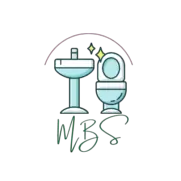We’ve all been there. You’re in the middle of cleaning your bathroom, and you realize you’re out of tile cleaner. Or worse, you get to the tub and realize you don’t have any bleach or disinfectant strong enough to clean it. So, can you use toilet bowl cleaner in the tub?
The answer is maybe. It depends on the toilet bowl cleaner. Some contain harsh chemicals that could damage your tub or skin.
Others may not be powerful enough to actually clean your tub. So, if you’re thinking about using toilet bowl cleaner in the tub, it’s important to check the label first and make sure it’s safe to use on surfaces other than toilet bowls.

Why You Might Be Tempted to Use Toilet Bowl Cleaner in the Tub
There are a few reasons why you might be tempted to use toilet bowl cleaner in the tub. First, most toilet bowl cleaners contain powerful chemicals that can break down tough stains and grime.
Second, many toilet bowl cleaners come in a convenient spray bottle that makes it easy to apply to hard-to-reach places. And third, let’s face it—toilet bowl cleaners are usually a lot cheaper than tile cleaners or disinfectants specifically designed for baths and showers.
However, just because something is cheaper doesn’t mean it’s a good idea. In fact, using toilet bowl cleaner in the tub can be dangerous.
First of all, as we mentioned before, some brands of toilet bowl cleaners contain harsh chemicals that can damage your skin or respiratory system if they’re inhaled.
Second, if you accidentally get toilet bowl cleaner on your clothing, it can cause irreversible damage.
Finally, if you use too much toilet bowl cleaner, it can leave behind a residue that’s difficult to remove—and that residue could be harmful if ingested.
Can I Clean My Sink with Toilet Bowl Cleaner?
While toilet bowl cleaner is designed for use on toilets, toilet bowl cleaner can also be used to clean sinks. The strong chemicals in the cleaner can help break down tough buildup and leave your sink sparkling clean.
But you should be careful when using toilet bowl cleaner on surfaces like bathtubs and sinks that aren’t as strong. The strong chemicals can damage or destroy the finish on these surfaces, so it’s best to test the cleaner on a small area first.
If you’re looking for a cheap and easy way to clean your sink, give toilet bowl cleaner a try. Just be sure to use it with caution.
How Do Toilet Bowl Cleaners Work?
Toilet bowl cleaners such as Lysol use a variety of chemicals to break down dirt and grime. The most common active ingredients are hydrochloric acid and bleach. Hydrochloric acid breaks down the molecules of dirt, while bleach removes color from surfaces.
Toilet bowl cleaners come in different concentrations, depending on the amount of dirt and grime to be removed. Low- or medium-concentration cleaners are typically used for general cleaning jobs, such as toilets, sinks, and bathtubs.
Higher concentrations are used for tougher jobs, such as rusting metal fixtures. However, these stronger cleaners can pose a danger to users and shower surfaces. When using any toilet bowl cleaner, it is important to follow the directions carefully and take precautions to avoid contact with the skin and eyes.
What Are the Alternatives to Toilet Bowl Cleaners?
When it comes to cleaning your bathtub, you may want to consider alternatives to toilet cleaner. Toilet cleaners can be hard on your tub and might not do what you want them to.
Homemade cleaners are just as good as, if not better than, commercial cleaners. To make a homemade cleaner, mix equal parts water and vinegar in an empty container.
Add some antimicrobial oils into the mixture to help decimate all pathogens in your bathtub and make it safer and healthier for users. With a little time and effort, you can easily make your own bathtub cleaner that is just as effective as any commercial product.
A mixture of vinegar and baking soda is a traditional cleaning agent that can be used to sanitize and remove stains from surfaces. The combination is also ideal for cleaning bathtubs.
To make the mixture, you will need one tablespoon of fluid dishwashing soap, one and a half cups of pristine water, and half a cup of white vinegar.
Once the ingredients are mixed together, pour the mixture evenly over your bathtub and let it sit for about ten minutes before using a scrubber to get it off.
Rinse your bathtub with clean water afterward to achieve a bright, sparkling appearance.
Can Toilet Cleaners Kill You?
If you swallow toilet bowl cleaners or breathe in their toxic fumes, you could die. A large amount of toilet bowl cleaner used in cleaning a bathroom leads to more fumes than what you have when cleaning a toilet bowl.
This increases the level of danger to the user. When using toilet bowl cleaner, it is important to use ventilation to avoid inhaling fumes. If ingested, contact Poison Control right away. Toilet bowl cleaners contain bleach and hydrochloric acid, which are both harsh and poisonous when ingested into the body.
Also, they emit fumes when mixed with other substances or on their own. Inhaling these fumes can lead to serious respiratory problems. Swallowing toilet bowl cleaners can cause burns to the esophagus and stomach. If you or someone you know has ingested toilet bowl cleaner, call Poison Control immediately.
Conclusion
So, can you use toilet bowl cleaner in the tub? The answer is maybe—it depends on the product you’re using. Some brands of toilet bowl cleaners are safe to use on surfaces other than toilets, but others are not.
If you’re thinking about using toilet bowl cleaner in the tub, be sure to check the label first and make sure it won’t damage your skin or respiratory system if inhaled. And as always, use caution when handling any cleaning products—accidents happen more often than you think!


